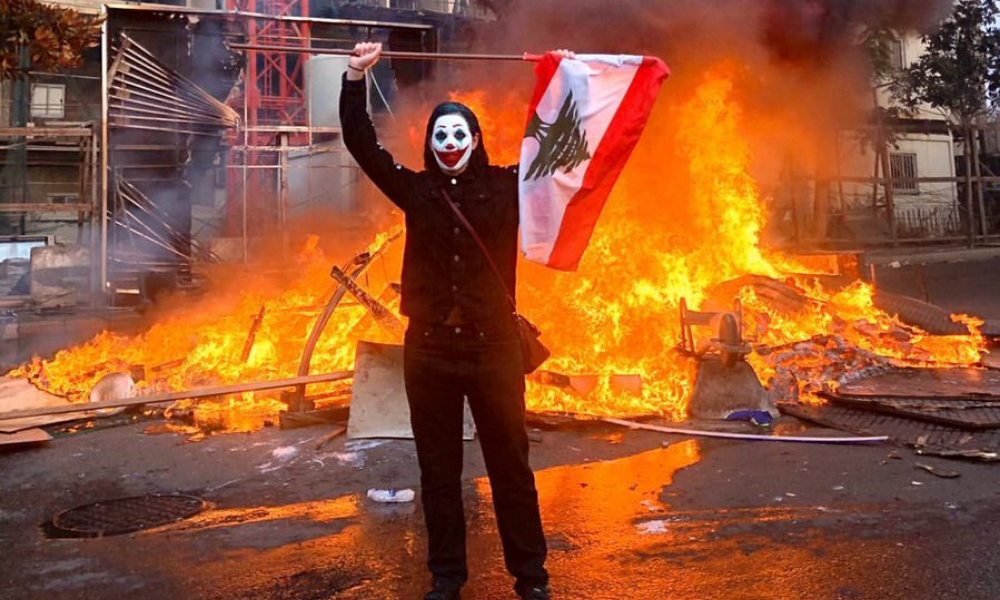Unrest Unveiled: Examining the Complexity of Riots and their Underlying Catalysts
Riots: Catalysts for Change or Chaos? While the destruction is undeniable, they force us to confront deep-rooted issues and demand justice.

Introduction
Riots have long been a controversial subject, often triggering a polarized response within society. While it is crucial to condemn violence and destruction, it is equally important to acknowledge the underlying factors that contribute to social unrest. This blog post aims to shed light on the multifaceted nature of riots, exploring the complexities, causes, and potential ramifications involved.
Understanding the Unrest
Riots are powerful expressions of societal discontent, often stemming from deep-rooted grievances. They are not spontaneous outbursts of violence but rather the culmination of frustrations that have been brewing over time. Economic disparities, racial injustice, political corruption, and systemic inequalities are just a few of the many issues that can ignite a riotous response.
Statistics and Figures
Let us delve into some figures and statistics that provide insights into the alarming prevalence of these riots:
- According to a study conducted by the United Nations, between 2015 and 2020, there were over 3,000 protests and demonstrations worldwide, highlighting the widespread nature of social unrest.
- In the United States, the National Bureau of Economic Research found that riots during the 1960s resulted in a significant increase in political participation among African Americans, leading to reforms and positive social change.
- The "Arab Spring" uprisings, which began in late 2010, saw millions of people across the Middle East and North Africa taking to the streets, demanding political freedoms and socioeconomic reforms.
Quoting Perspectives
To gain a comprehensive understanding of riots, it is important to explore the viewpoints of various experts and activists:
- Renowned civil rights leader Martin Luther King Jr. once remarked, "A riot is the language of the unheard," emphasizing that riots often arise when peaceful means of protest have been exhausted.
- Political scientist Erica Chenoweth, in her extensive research on civil resistance, has argued that nonviolent protests are twice as likely to achieve their objectives compared to violent movements.
- Activist and philosopher Angela Davis, speaking about the uprisings in response to police violence, stated, "Protest is when I say I don't like this. Resistance is when I put an end to what I don't like. And revolution is when I create what I do like."
Catalysts of Riots
While riots may appear chaotic and aimless at first glance, they are often triggered by specific incidents or events. Some common catalysts include:
- Cases of police brutality: The tragic deaths of George Floyd, Breonna Taylor, and countless others at the hands of law enforcement have sparked widespread protests and riots, as communities demand justice and an end to systemic racism. The use of excessive force by police serves as a stark reminder of the deep-rooted biases and inequalities within the criminal justice system.
- Economic inequality: When marginalized communities face limited access to resources, education, and opportunities, pent-up frustrations can erupt into riotous displays of anger against an unjust system. High unemployment rates, wealth disparities, and inadequate social support contribute to a sense of hopelessness and resentment, fueling the flames of unrest.
The Burden of Change
Riots force society to confront uncomfortable truths and highlight the urgency for change. While the immediate aftermath of riots can be destructive, they can also serve as catalysts for meaningful transformation:
- Societal reform: Riots have historically led to significant changes in policies and institutions. The Stonewall Riots in 1969, for example, played a pivotal role in the LGBTQ+ rights movement, leading to increased visibility and progressive legal reforms. The recognition of the impact of riots often prompts governments and institutions to address underlying grievances and take proactive steps toward social justice.
- Public awareness and discourse: Riots generate widespread attention and foster discussions on crucial social issues that may have been neglected or dismissed in the past. They shine a spotlight on the deep-seated problems that have plagued communities for years, compelling individuals, organizations, and policymakers to engage in dialogue and seek long-term solutions. The collective outrage and demands for change that arise from riots often lead to increased awareness and mobilization around pressing societal issues.
- Community empowerment: Riots can galvanize communities and foster a sense of solidarity among those who have been marginalized or oppressed. They provide an outlet for collective expression and a platform for individuals to demand justice and equal rights. Through riotous actions, communities find strength in their shared struggles, organizing grassroots movements, and engaging in advocacy to effect lasting change.
Addressing the Concerns
It is essential to acknowledge the legitimate concerns about the destructive nature of riots and the potential harm they can cause to innocent individuals and businesses. The preservation of public safety and the protection of livelihoods are of utmost importance.
However, it is equally crucial to avoid dismissing riots as mere acts of criminality. To truly understand and address the underlying causes of unrest, it is necessary to delve into the systemic issues that fuel them. By focusing solely on the violence and destruction, without considering the root causes, society risks perpetuating the very conditions that give rise to riots in the first place.
Moving Towards Solutions
To prevent riots and promote social harmony, proactive measures should be taken to address the root causes of societal unrest. This includes:
- Promoting equality and justice: Governments and institutions must strive to dismantle systemic inequalities, addressing issues such as police brutality, economic disparities, and racial discrimination. Meaningful reform of the criminal justice system, investment in education and job creation, and inclusive policies are crucial steps toward creating a more equitable society.
- Encouraging peaceful dialogue and engagement: Open lines of communication between communities, policymakers, and law enforcement are vital for fostering understanding, trust, and collaboration. Encouraging peaceful protests, facilitating dialogue platforms, and creating spaces for marginalized voices to be heard can help channel frustrations into constructive avenues for change.
- Investing in social programs and support: Providing resources, opportunities, and support to disadvantaged communities can alleviate feelings of hopelessness and reduce the likelihood of unrest. By addressing issues such as poverty, inadequate healthcare, and lack of access to education, society can create an environment where everyone has an equal chance to thrive.

Riots are complex phenomena that arise from deep-seated grievances and systemic injustices. While violence and destruction should be condemned, it is important to understand the underlying catalysts and motivations behind these acts of unrest. Riots can serve as wake-up calls, forcing society to confront its failings and work towards meaningful change. By addressing the root causes of social unrest, fostering dialogue, and promoting equality and justice, we can move closer to a more inclusive and harmonious society for all.




